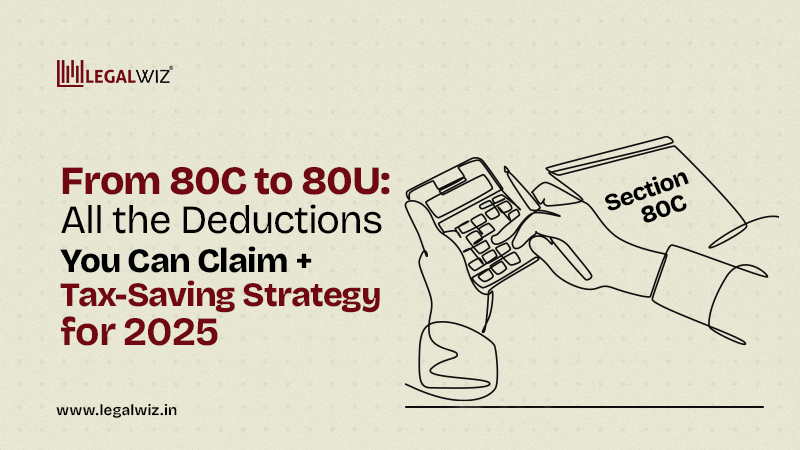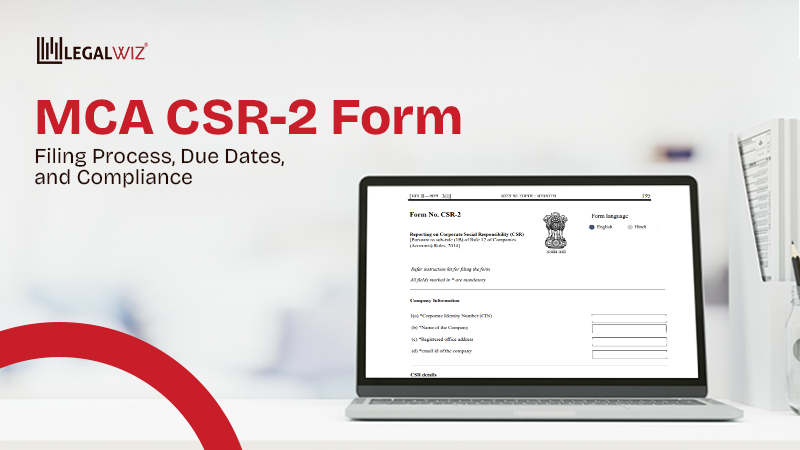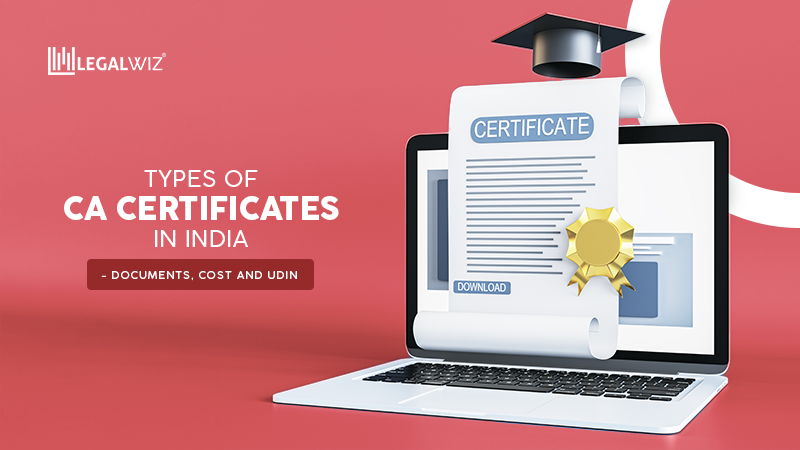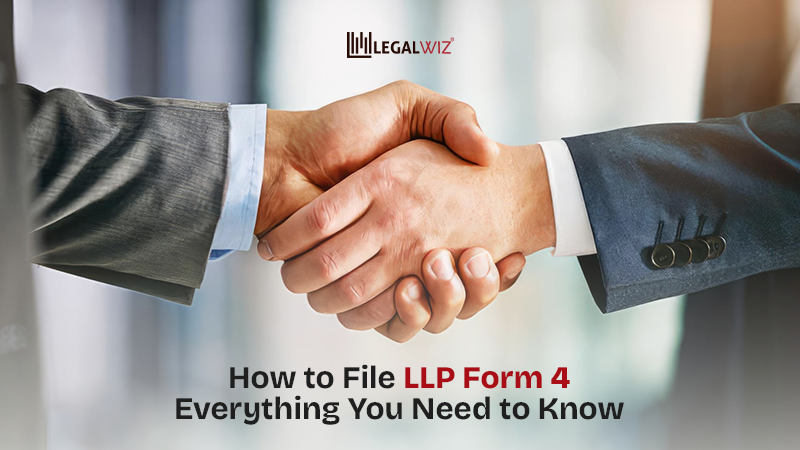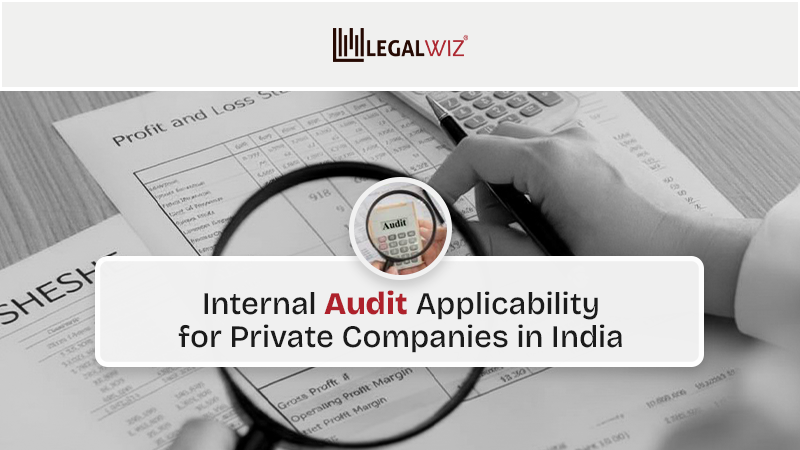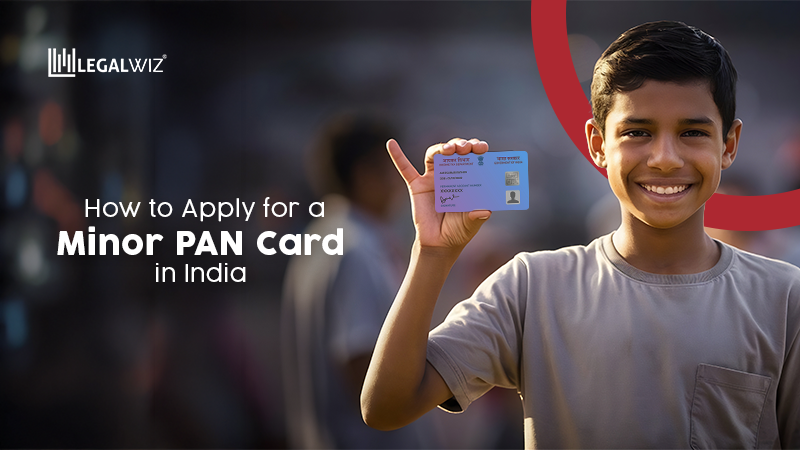From 80C to 80U: Your Complete Guide to Tax Deductions & Saving Strategy for 2025
Why Pay More Tax Than You Have To?
Let’s be honest — nobody enjoys giving the government more money than they need to. The good news? You don’t have to. Whether you’re salaried, self-employed, freelancing on weekends, or juggling all three, you’ve probably wondered, “How can I get a tax exemption?” The answer lies in a buffet of deductions just waiting to lower your tax bill.
From the popular Section 80C to the often-overlooked 80U, the Income Tax Act has built in smart ways for you to save. But here’s the catch — you need to know exactly what to claim, how much, and when to claim it while filing your ITR. And above all, you need to be in the right tax regime even to access these deductions.
This guide decodes every key tax exemption and deduction from 80C to 80U — and sprinkles in smart strategies so your 2025 tax-saving plan isn’t just compliant, but clever.
Before we dive in, here’s a quick cheat sheet of what you’ll walk away with…
| Key Takeaways – Your Tax-Saving Playbook at a Glance ● From 80C to 80U — there’s a deduction for almost every life stage and expense ● Max limit under 80C? Explore extra savings via NPS, health insurance, education loans, and more ● Salaried or freelancer? There’s a strategy for both — standard deductions vs. presumptive taxation ● Bought a house? Paying rent? Took a trip? Yes, you can claim it all — legally ● Support dependents or have medical bills? 80U, 80DD, and 80DDB offer relief ● Filed your ITR? Now track your refund smartly and avoid delays ● Pick the right regime — deductions only matter if you’re in the old one |
This blog walks you through every major deduction, exemption, and filing strategy, with practical tips, proof checklists, and updates for AY 2025–26.
Let’s save smarter, not harder.
1. What Are Income Tax Deductions (And Why You Should Care)
You’ve probably heard the term “deductions” tossed around every tax season, especially with the new income tax rules in play, but what does it really mean? Let’s hit refresh on what’s new in ITR filing, yep, the New Income Tax Rules 2025–26 just dropped their latest update. This will help you decode the changes in deductions, exemptions, and the kind of refunds you can expect.
In simple terms, deductions are specific expenses or investments that reduce your taxable income. The more eligible deductions you claim, the less tax you owe, because the Income Tax Department calculates your liability on a lower “net income.”
If you’re looking to build your personal income tax exemption list, this guide will walk you through all the major (and lesser-known) options to help you save smarter.
Let’s break it down:
Deductions vs Exemptions vs Refunds — What’s the Difference?
| Term | What It Means | Example |
| Deduction | Subtracted from your gross income to arrive at taxable income | It includes PF, LIC, ELSS, home loan, and professional tax |
| Exemption | Specific income that’s not taxable at all | HRA (House Rent Allowance), if you live in a rented home |
| Refund | The government will return the extra tax you paid | Excess TDS claimed back after ITR filing |
Quick Tip:
- Exemptions reduce what counts as income.
- Deductions reduce how much of that income is taxed.
- Refunds return the extra tax you already paid.
All three are good for your wallet, but they work differently.
Old vs New Tax Regime: When Do Deductions Even Matter?
Here’s the catch:
Deductions aren’t available to everyone. Whether you can claim them depends on the tax regime you choose.
| Tax Regime | Can You Claim Deductions? |
| Old Regime | Yes — You can claim most deductions and exemptions (like 80C, 80D, HRA, etc.) |
| New Regime | No — Most deductions are not allowed, but you get lower tax rates instead |
Since FY 2023–24, the new regime is the default, but you can still switch to the old one if it helps you save more.
Get to know both regimes in detail with our full guide: Tax Regime Comparison 2025: Old vs New – What Should You Pick?
So, if you’re ready to make the most of Sections 80C to 80U, you’re officially Team Old Regime.
Let’s dive into how each section can help you save smart in 2025.
But, before we dive in and dissect each section, let’s take a glance at all the deductions –
Income Tax Deductions You Can Claim (FY 2025–26)
| Section | Covers | Max Deduction |
| 80C | ELSS, PPF, LIC, Tuition Fees, 5Y FDs | ₹1.5 lakh |
| 80CCD(1B) | Extra NPS Contribution | ₹50,000 |
| 80CCD(2) | Employer’s NPS Contribution | 10% of Salary (Basic + DA) |
| 80D | Health Insurance & Check-ups | ₹25K–₹1L |
| 80DD | Supporting Dependent with Disability | ₹75K / ₹1.25L |
| 80DDB | Treatment for Critical Illness | ₹40K / ₹1L |
| 80U | If You Have a Disability | ₹75K / ₹1.25L |
| 24(b) | Home Loan Interest | ₹2 lakh |
| 80EE/80EEA | First-Time Home Buyers | ₹50K / ₹1.5L |
| 80EEB | Interest on EV Loan | ₹1.5 lakh |
| 80GG | Rent (No HRA) | Up to ₹60,000 |
| 10(13A) | HRA Exemption | Based on Rent & City |
| 10(5) | LTA – Leave Travel Allowance | Travel Fare Only |
| 80E | Interest on Education Loan | No Limit |
| 80G | Donations to Eligible Charities | 50% or 100% |
Tip: Use this table like a deduction decoder while reading the full blog — every section here is explained with real tips, examples, and filing steps later.
2. Section 80C: The MVP of Tax Saving
Maximum Deduction: ₹1.5 lakh per year
If tax-saving had a hall of fame, Section 80C would be the headliner. Why? Because it covers a wide range of popular investments and expenses that most people already have — or should have.
Whether you’re playing it safe or going a little risky for higher returns, 80C has something for everyone.
Here’s the breakdown of the all-stars under this section:
ELSS (Equity Linked Saving Schemes)
Risk Level: Medium to High
Lock-in: 3 years
A mutual fund that loves tax-saving as much as you do. ELSS funds invest in equities; they also offer the shortest lock-in period among all 80C options, but remember, they come with market-linked risk.
Pro Tip:
- Invest before March 31
- Keep mutual fund statements or account summaries as proof
- Don’t rely on last-minute lump sums — use SIPs for smoother investing
PPF & EPF (Public/Employees Provident Fund)
Risk Level: Low
Lock-in: Long-term (15 years for PPF)
These are your long-term, government-backed BFFs. If you’re salaried, EPF is a mandatory deduction from your salary, already taken care of in your monthly paycheck.
You can also open a PPF account for voluntary savings, tax-free returns, guaranteed interest, and all the benefits.
Pro Tip:
- A passbook or annual statement works as proof
- Interest earned is also tax-free — double win!
Life Insurance Premiums
Whether it’s a policy for yourself, your spouse, or your kids, life insurance premiums paid to a registered insurer are eligible under 80C.
Just make sure:
- Policy is in your name or immediate family
- Annual premium ≤ 10% of the sum assured for policies issued after April 2012
Pro Tip:
- Keep premium payment receipts and policy documents
- Only traditional and ULIP policies qualify — not term riders like critical illness (those go under 80D)
Tuition Fees (for up to 2 kids)
Education isn’t cheap, but it’s tax-saving gold. Tuition fees paid to schools, colleges, or universities in India for your children’s full-time education qualify under 80C.
Note:
- Only tuition fees count — not donations, transport, or coaching class payments
- Max limit: 2 children per taxpayer
Tax-Saving Fixed Deposits (5-Year Lock-in)
Lower risk, fixed returns. Returns are taxable, but the investment qualifies for a deduction.
Pro Tip: Ask for a 5-year FD certificate with a lock-in clause to prove eligibility.
Annexure Checklist: What to Keep Handy
Before claiming your ₹1.5L deduction, make sure your tax file isn’t missing these:
- ELSS account statements
- Insurance premium receipts
- PPF passbook or EPF slip
- Tuition fee receipts (with child’s name and school details)
- FD certificate with lock-in proof
Section 80C is like a buffet; pick what suits your taste and financial goals. Just don’t exceed the ₹1.5 lakh limit.
Next up: What if you’ve already maxed this out? Don’t worry, there’s more in the tax-saving pantry.
3. Health Insurance & Section 80D: Don’t Just Save Tax, Save Yourself
They say health is wealth, and the Income Tax Act agrees. Section 80D rewards you for taking care of yourself and your family before a medical emergency hits.
Think of it as a win-win: protect your loved ones and slash your tax bill in the process.
Deduction Limits: What You Can Claim
Under Section 80D, you can claim deductions on premiums paid for health insurance for:
| Who You’re Covering | Max Deduction Allowed |
| Self, Spouse & Dependent Children (below 60) | ₹25,000 |
| Parents (below 60) | ₹25,000 |
| Parents (60 or above) | ₹50,000 |
| Both you & parents are senior citizens | ₹1,00,000 (total) |
Add-on Alert: Bought a 2- or 3-year policy? You can still claim it — just divide the total premium by the policy term to claim the right amount for each year
Pro Tip: Preventive Health Check-Ups Count Too!
Even if you don’t have full-blown insurance, you can still claim up to ₹5,000 for preventive health check-ups, within the above limits.
Got a routine blood test, annual screening, or dental visit? That might just shave off a bit from your taxes, too.
As with all deductions, keep a digital record of payments. (Refer to our checklist under Section 80C if needed.)
Section 80D isn’t just a tax-saving section — it’s a reminder to actually take care of your health. Whether it’s a ₹5K check-up or a ₹50K policy, it all adds up when filing your return.
4. NPS & Section 80CCD: Tax Benefits with Retirement Goals
Retirement might feel far away, but your tax savings can start now. If you’re investing in the National Pension System (NPS), Section 80CCD offers bonus deductions, including an extra ₹50,000 on top of your 80C limit.
Claiming NPS in Your ITR? Start with Your PRAN
If you’ve invested in NPS, you’ll have a Permanent Retirement Account Number (PRAN). This isn’t just a login credential; it links your investment to your ITR.
Here’s what to do:
- Log in to your CRA portal (NSDL or KFintech)
- Download your annual NPS statement
- Use it to fill 80CCD details while filing ITR
Only Tier-I contributions qualify for tax benefits. Tier-II is flexible but not tax-deductible (except for central govt employees).
Section 80CCD(1B): Your ₹50K Retirement Booster
Already hit the ₹1.5 lakh limit under 80C? Don’t stop saving yet. Section 80CCD(1B) gives you an additional ₹50,000 deduction for voluntary contributions to NPS Tier-I.
Example:
- ₹1.5L claimed under 80C
- ₹50K invested in NPS Tier-I
Total deduction: ₹2L
Even a ₹4,200 monthly SIP in NPS gets you there.
What About Employer Contributions?
If your employer also contributes to your NPS (lucky you), you can claim another deduction under Section 80CCD(2):
- Limit: Up to 10% of your Basic + DA
- This is separate from 80C and 80CCD(1B)
Check Form 16 — employer NPS contributions are usually listed.
Quick Recap: NPS Tax Benefits at a Glance
| Section | Covers | Limit |
| 80C | NPS (Tier-I) – part of 80C options | ₹1.5 lakh (shared) |
| 80CCD(1B) | Additional NPS (Tier-I) contributions | ₹50,000 extra |
| 80CCD(2) | Employer’s contribution to your NPS account | Up to 10% of Basic + DA |
With NPS, you’re not just planning for retirement, you’re getting rewarded for it today.
5. Home Loan Deductions: Decode Section 24(b), 80EE, 80EEA & 80EEB
Whether you’re paying EMIs for your dream apartment or just thinking about going electric with your next vehicle, there’s a section for that. Yep, your loan liabilities might just be tax-saving opportunities in disguise.
Take a quick glance at what we’re going to discuss in this section:
| Section | Covers | Max Deduction | Key Eligibility |
| 24(b) | Home loan interest | ₹2,00,000 | Self-occupied property |
| 80EE | Extra for first-time buyers | ₹50,000 | Loan in FY 2016–17, prop ≤ ₹50L, loan ≤ ₹35L |
| 80EEA | Affordable housing bonus | ₹1,50,000 | Loan in FY 2019–22, prop ≤ ₹45L, first home |
| 80EEB | EV loan interest | ₹1,50,000 | Loan in FY 2019–23, no other EV owned |
Let’s break down the tax magic hidden in home (and even EV) loans:
Section 24(b): Claim Interest on Home Loan (Up to ₹2 Lakh!)
If you’ve taken a loan for a self-occupied house, you can claim up to ₹2 lakh/year on interest paid, under Section 24(b).
Key Conditions:
- Property must be acquired or built within 5 years of loan
- Only interest is covered (principal falls under 80C)
- If house is rented, there’s no ₹2L cap — but adjusted under ‘Loss from House Property’
Pro Tip: If you and your spouse are co-borrowers, each of you can claim ₹2L = ₹4L total
Section 80EE & 80EEA: First-Time Buyer’s Bonus
So you’re a first-time homeowner? The government’s got some extra tax love for you — but only if you bought your home under specific conditions.
Section 80EE
- Additional deduction up to ₹50,000
- The loan must be sanctioned between April 1, 2016 – March 31, 2017
- Loan amount ≤ ₹35 lakh; Property value ≤ ₹50 lakh
- You must not own any other house at the time of loan sanction
Mostly applies to older cases, but is still claimable if eligible.
Section 80EEA
- Additional deduction up to ₹1,50,000
- For loans sanctioned between April 1, 2019 – March 31, 2022
- Property value ≤ ₹45 lakh
- You must be a first-time home buyer
- Not applicable if you’ve claimed 80EE
Can be claimed in addition to the ₹2L under Section 24(b)
Section 80EEB: Yes, Your Electric Vehicle Loan Saves Tax Too!
Not home-related, but while we’re decoding the EEs…
Section 80EEB gives you a deduction of up to ₹1,50,000 on interest paid on EV loans.
Eligibility:
- The loan must be taken between April 1, 2019 – March 31, 2023
- The vehicle should be fully electric (no hybrid loopholes)
- You should not own another EV at the time of loan sanction
This one’s a hidden gem, a win for your taxes and the planet
Your EMI isn’t just paying off your home or EV, it’s paying off your taxes too. Claim smart. File smarter.
6. Salaried vs Freelancers: Tax Deductions & Strategies Compared
Salaried? Freelancer? Side hustler by night, employee by day? No matter how you earn, the tax department wants its share. But here’s the good news: you can decide how much of that income gets taxed – even if it’s income tax allowances – if you play your cards (and deductions) right.
Let’s break down who gets what:
Tax Perks Comparison
| Deduction Type | Salaried Professionals | Freelancers/Self-Employed |
| Standard Deduction | ₹50,000 (auto-applied) | Not available |
| HRA (Rent Allowance) | If you live in a rented house | Not applicable |
| LTA (Leave Travel) | For domestic trips (with proof) | Not applicable |
| Presumptive Tax (44ADA) | Not applicable | 50% income taxed; no need to claim expenses |
| Business/Professional Exp | Mostly covered by the employer | Can claim rent, internet, software, travel, etc. |
Freelancers opting for regular taxation (not presumptive) must maintain books and may require audit — check thresholds.
Freelancer Tip:
Not sure if you should go for 44ADA or normal taxation?
Quick rule of thumb:
- Use 44ADA if you don’t want the hassle of tracking expenses
- Go the normal route if you’ve had high costs (laptops, rent, etc.), and want to claim them all
Deductions You Both Can Claim
Yes, some deductions are open to everyone. Here’s what you can claim:
| Section | What You Can Claim |
| 80C | ELSS, LIC, PPF, Tuition Fees, FDs (up to ₹1.5L) |
| 80D | Health insurance premiums for self/family |
| 80CCD(1B) | Extra ₹50K for NPS (above 80C limit) |
| 80E | Interest on education loans |
| 80G | Donations to eligible charities |
Key takeaways:
- Salaried? Use built-in perks like HRA, LTA, and that sweet ₹50K standard deduction.
- Freelancer? Claim real business expenses or go simple with 44ADA.
No matter how you earn, use what’s built-in, claim what you spend, and plan smart. The ITR doesn’t care where your money comes from, only that you file it right.
7. Disability & Critical Illness Deductions: Relief That Matters (80U, 80DD, 80DDB)
Tax-saving isn’t just about investments or insurance — it also supports individuals and families dealing with serious medical conditions or disabilities. That’s where Sections 80U, 80DD, and 80DDB come in.
Whether you’re a person with a disability, supporting someone who is, or paying for the treatment of a critical illness, these sections offer meaningful and compassionate financial relief.
Quick Snapshot: Who Can Claim What?
| Section | For Whom? | Deduction Limit | Who Can Claim? | Documents Required |
| 80U | An individual with a disability | ₹75,000 (≥40%) / ₹1,25,000 (≥80%) | The taxpayer themself | Disability certificate; Form 10-IA (for certain conditions) |
| 80DD | Caring for a dependent with a disability | ₹75,000 (≥40%) / ₹1,25,000 (≥80%) | Family member supporting the dependent | Dependent’s certificate; insurance proof (if applicable) |
| 80DDB | Treatment for critical illness | ₹40,000 (<60 yrs) / ₹1,00,000 (60+) | Taxpayer (self or dependent treatment) | Form 10-I from the government specialist, medical bills, or receipts |
Section 80U – For Individuals with Disabilities
If you, as the taxpayer, have a certified disability (as per government notification), you can claim a flat deduction — no need to submit bills or actual expenses.
- Who can claim: The taxpayer themself
- What you need:
- Valid disability certificate
- Form 10-IA (mandatory in case of neurological disorders, autism, etc.)
Section 80DD – For Caring for a Dependent with Disability
If you’re supporting a dependent (spouse, child, parent, or sibling) with a disability, you can claim this fixed deduction, even if you haven’t incurred specific medical expenses.
- Who can claim: Any family member caring for the dependent
- What you need:
- Dependent’s disability certificate
- Proof of insurance/reimbursement scheme (if claiming expenses indirectly)
Section 80DDB – For Treatment of Critical Illness
This section covers the cost of treatment for certain specified diseases under Rule 11DD, including cancer, Parkinson’s, renal failure, AIDS, and neurological disorders.
- Who can claim: The taxpayer (for self or dependent)
- What you need:
- Form 10-I: Certificate from a specialist in a government hospital
- Bills or medical receipts (retain for verification; not mandatory to upload)
Where to Report These in Your ITR
- You’ll find dedicated sections in the ITR form for 80U, 80DD, and 80DDB.
- Uploading proofs isn’t mandatory at filing time, but the IT Department can request them later during scrutiny.
- Some platforms (like LegalWiz or government e-filing portals) allow attaching documents while e-verifying, though most claims are self-declared unless selected for audit.
Pro Tip: Organize Your Tax Folder
Always keep scanned copies of:
- Disability/medical certificates
- Forms 10-IA or 10-I
- Insurance proof or bills (where applicable)
Save them with your ITR records — it’ll make things smooth during a future review or correction.
If you or your family member is living with a certified disability or undergoing treatment for a serious illness, you’re entitled to more than just medical care — you’re entitled to tax relief.
Just make sure your paperwork’s in order — and don’t miss claiming what you legally deserve.
8. Claiming HRA, LTA & Home Loan Together (Yes, You Can!)
Let’s bust a common tax myth:
Yes, you absolutely can claim HRA, LTA, and home loan deductions in the same year.
The key? Know how each section works and how to position them smartly.
So if you rent in Delhi, own a flat in Pune, and vacation in Kerala, you can legally claim it all. Let’s show you how.
How to Split Rent + Loan + Travel and Still Save
Let’s say you:
- Pay rent in your work city
- Own a home elsewhere (or it’s under construction)
- Took a trip during your paid leave
Here’s how each benefit fits into your tax puzzle:
| Claim Type | Section | How to Maximize |
| HRA | Section 10(13A) | Claim rent paid even if you own a house elsewhere. Rent receipts are key. |
| Home Loan Interest | Section 24(b) | Claim up to ₹2L interest — even for a vacant or let-out house (with conditions). |
| Home Loan Principal | Section 80C | Claim up to ₹1.5L under your overall 80C cap. |
| LTA | Section 10(5) | Covers domestic travel fare only — must be claimed through your employer. |
Yes, you can claim all of these together, they fall under different sections and don’t cancel each other out.
LTA Rules: Why Your Goa Trip Might Not Qualify
Your last-minute beach getaway might have been fun, but LTA rules are stricter than they seem:
- Only domestic travel is allowed
- Travel must be taken while on official leave
- Covers travel fare only (train, flight, bus) — no hotels or meals
- Claimable only twice in a block of 4 years (2022–2025 is the current block)
- Must be claimed via employer (not in your ITR)
No employer = no LTA claim.
Freelancers or self-employed folks, unfortunately, miss out.
Pro Tip: Claim Rent Even Without HRA
No HRA in your salary slip? You might still be eligible for rent deduction under Section 80GG.
Eligibility:
- You’re not already claiming HRA exemption
- Neither you nor your spouse owns a house in your work city
- You live on rent and can furnish rent receipts
Limit:
Whichever is least of:
- ₹5,000/month (₹60,000/year)
- 25% of total income
- Rent paid minus 10% of total income
You don’t have to choose between rent, EMIs, or travel — you can claim all three, provided you follow the rules and keep your proofs handy.
Think of it like a tax jigsaw — just know how the pieces fit, and you’ll save more than just money — you’ll save effort at filing time too.
9. Lesser-Known Deductions: Education Loans, Donations, Premiums
You’ve ticked the big ones — 80C, 80D, home loan? Great. But don’t stop there.
Some of the most rewarding deductions are the quiet ones — hiding in plain sight, waiting for you to notice. If you’re paying off an education loan, donating to a cause, or covering your parents’ health insurance, you could be leaving money on the table.
Let’s shine a light on these underrated tax-saving sections:
Section 80E – Interest on Education Loans (No Cap!)
Education is pricey, but 80E helps ease the load.
You can claim 100% of the interest paid on an education loan, with no upper limit.
Applicable If:
- The loan is for higher education (India or abroad)
- Taken for yourself, your spouse, your child’s education allowance, or a student under your guardianship
- Borrowed from a bank, NBFC, or approved charitable institution
Not allowed for loans from friends/family (sorry, Uncle Sharma!)
Claim Period: Up to 8 assessment years starting from the year you begin repayment
Important: Only the interest is deductible, not the principal.
Section 80G – Donations That Pay (in Deductions)
Charity feels good, and with 80G, it saves tax too.
You can claim:
- 50% or 100% of the donated amount (depending on the NGO/trust)
- With or without restriction (some donations are capped at 10% of gross total income)
You’ll Need:
- Donation receipt with the institution’s PAN and registration number
- Proof of non-cash payment (if donation > ₹2,000)
Pro Tip: Verify the NGO’s eligibility via the Income Tax portal before donating.
80D (Yes, Again!) – Premiums for Parents Are Separate
Already claimed ₹25K under 80D for your own policy? Don’t stop there.
You can separately claim:
- ₹25,000 if your parents are below 60
- ₹50,000 if they’re senior citizens
What You Need:
- Premium receipt in your name
- The policy must cover one or both parents
- Payment made through a non-cash mode
- Keep age proof handy during filing
Quick Recap – Are You Claiming These?
| Section | Covers | Max Limit |
| 80E | Interest on education loans | No upper limit |
| 80G | Donations to approved NGOs/trusts | 50% or 100% (subject to limits) |
| 80D | Health insurance for parents (extra claim) | ₹25K or ₹50K (depending on age) |
These aren’t “bonus” deductions — they’re part of your story. If you’re investing in education, giving back to society, or supporting aging parents, make sure your tax return reflects that.
Small steps = big savings. Don’t let these fly under your radar.
10. Refunds & Filing Strategy: Get What’s Yours (Faster)
You’ve played the tax-saving game well — now it’s time for the win: your refund.
A tax refund is what you get back when you’ve paid more tax than necessary, via TDS, advance tax, or excess self-assessment. But here’s the truth: the refund doesn’t just “happen.”
You’ve got to file smart, verify fast, and stay on top of the process. Let’s walk through how to track your refund status online, what might delay it, and what to do if it’s stuck.
How to Check Your Refund Status on the New Income Tax Portal
The ITR portal got a makeover, and refund tracking is simpler than ever.
Here’s how:
- Go to incometax.gov.in
- Log in using your PAN and OTP/password
- Navigate to: e-File → Income Tax Returns → View Filed Returns
- Click on your Acknowledgement Number
- Check the Refund Status on the dashboard
You’ll see one of these:
- Refund issued
- Under processing
- Refund failed (Fix required)
- Adjusted against outstanding demand
Common Refund Delays — And What’s Causing Them
| Issue | What It Means |
| Incorrect IFSC or bank details | Refund can’t be credited. Double-check! |
| Return not verified | E-verification pending = Return not processed |
| TDS mismatch in Form 26AS/AIS | Employer deducted TDS but didn’t report it |
| Previous year’s tax demand | Refund adjusted — check for old notices |
Quick Fix: Use the “Prevalidate Bank Account” feature on the portal to ensure your account is ready for a refund credit.
What To Do If Your Refund Is Stuck
Filed your return, verified everything, but it’s been over 4–6 weeks? Try this:
- Check Form 26AS and AIS for mismatches in income or TDS
- Submit a grievance under the “e-Nivaran” tab
- Contact CPC at their toll-free number or email support
- Revalidate your bank account if the IFSC or account number was incorrect
Got an intimation under Section 143(1)?
That’s the final assessment — it’ll confirm whether your return was accepted or adjusted.
Final Tip: Accuracy = Faster Refunds
Your refund doesn’t chase you — you chase it with a clean filing strategy.
- File early, not at the last minute
- Verify your return immediately after submission
- Cross-check your TDS, income, and bank details
- Respond to notices quickly, if any
Do that — and your refund will hit your bank faster than you can say “Section 143(1)”.
Final Thoughts: Don’t Just Save Tax – Plan Smart
You don’t need to memorize the Income Tax Act to file ITR; you just need a plan. And now, you’ve got one.
From maxing out your 80C to claiming rent receipts, investing in health (and health insurance), or even deducting that electric ride, smart tax-saving isn’t just about paying less tax.
It’s about owning your money.
Your Ultimate Tax-Saving Cheat Sheet:
- Plan early – don’t wait for the March-end scramble
- Keep proof – save receipts, statements & certificates
- Pick your regime – want deductions? Choose Old; want simplicity? Go New
- File like a pro – accurately, on time, with the right bank details
Need help with all this? Let LegalWiz.in handle your taxes — stress-free. We make ITR filing simple, transparent, and affordable. No jargon. No hidden fees. Just expert-backed, fully online tax filing that gets you maximum refund, minus the chaos.
File your Income Tax Return now
Your money. Your rules. Just smarter.
Frequently Asked Questions
What is the standard deduction in income tax?
The standard deduction is a flat ₹50,000 deduction for salaried individuals and pensioners. It reduces taxable income automatically — no receipts needed. It’s available only under the old tax regime.
How is income tax deducted from salary?
Employers deduct TDS every month based on your total salary, investments, and deductions claimed. This amount is reflected in your Form 16, which helps you file your return later.
What is deduction in income tax?
Deductions are specific expenses or investments like LIC, PF, health insurance, etc., that reduce your taxable income. You claim these under sections like 80C, 80D, or 80E while filing your ITR.
What is the 80GG deduction in income tax?
Section 80GG allows rent deduction up to ₹60,000 annually for those not receiving HRA. You must be paying rent, not own property, in your working city, and maintain valid rent receipts.
What is the home loan deduction in income tax?
You can claim ₹1.5L under Section 80C (principal) and ₹2L under Section 24(b) (interest). Additional benefits may apply under 80EE or 80EEA if you’re a first-time home buyer.

Sapna Mane
Sapna Mane is a skilled content writer at LegalWiz.in with years of cross-industry experience and a flair for turning legal, tax, and compliance chaos into clear, scroll-stopping content. She makes sense of India’s ever-changing rules—so you don’t have to Google everything twice.
